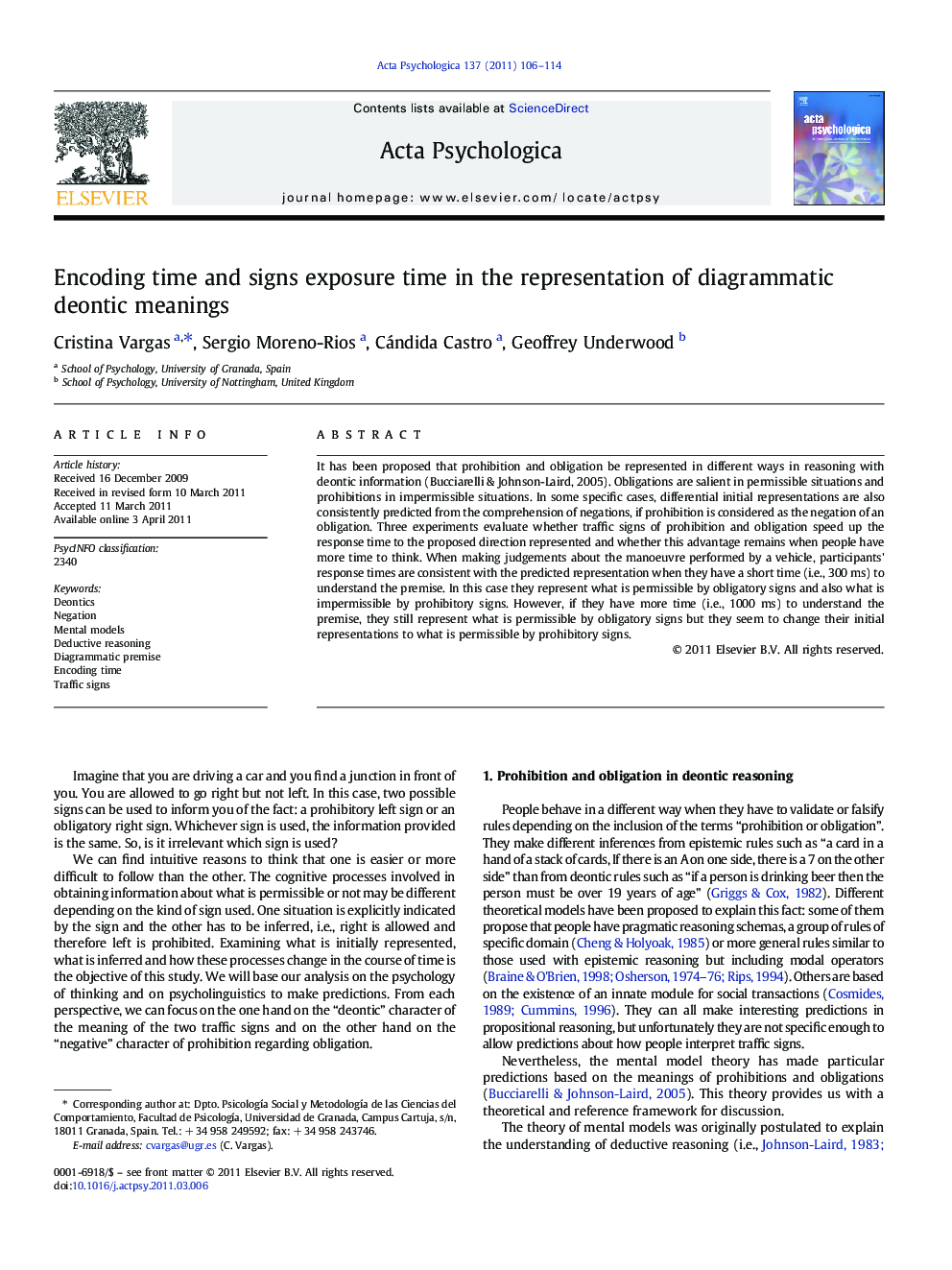| Article ID | Journal | Published Year | Pages | File Type |
|---|---|---|---|---|
| 920160 | Acta Psychologica | 2011 | 9 Pages |
It has been proposed that prohibition and obligation be represented in different ways in reasoning with deontic information (Bucciarelli & Johnson-Laird, 2005). Obligations are salient in permissible situations and prohibitions in impermissible situations. In some specific cases, differential initial representations are also consistently predicted from the comprehension of negations, if prohibition is considered as the negation of an obligation. Three experiments evaluate whether traffic signs of prohibition and obligation speed up the response time to the proposed direction represented and whether this advantage remains when people have more time to think. When making judgements about the manoeuvre performed by a vehicle, participants' response times are consistent with the predicted representation when they have a short time (i.e., 300 ms) to understand the premise. In this case they represent what is permissible by obligatory signs and also what is impermissible by prohibitory signs. However, if they have more time (i.e., 1000 ms) to understand the premise, they still represent what is permissible by obligatory signs but they seem to change their initial representations to what is permissible by prohibitory signs.
Research Highlights► Time influences inferences made from obligatory and prohibitory signs. ► Obligatory signs produce faster responses, mainly when the manoeuvre is allowed. ► Prohibitory signs are good only for not-allowed manoeuvres and short time available. ► When more time is available, people think where to go (the permitted situation). ► The key time factor of this series was the encoding time but not the exposure time.
